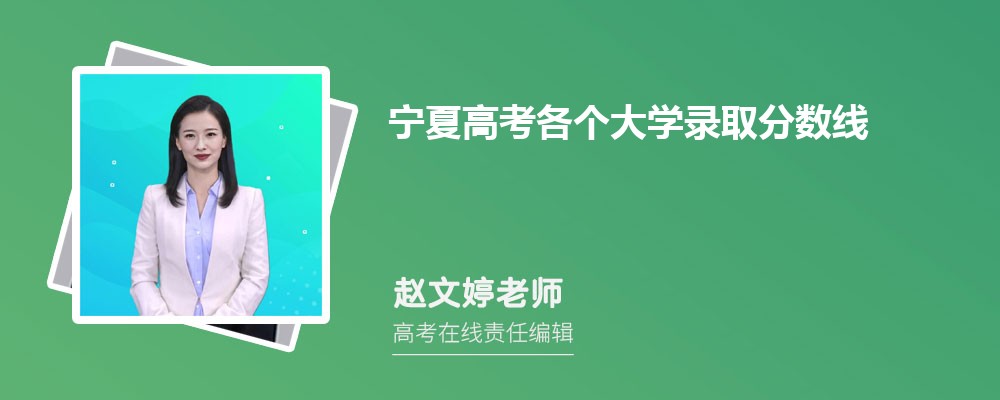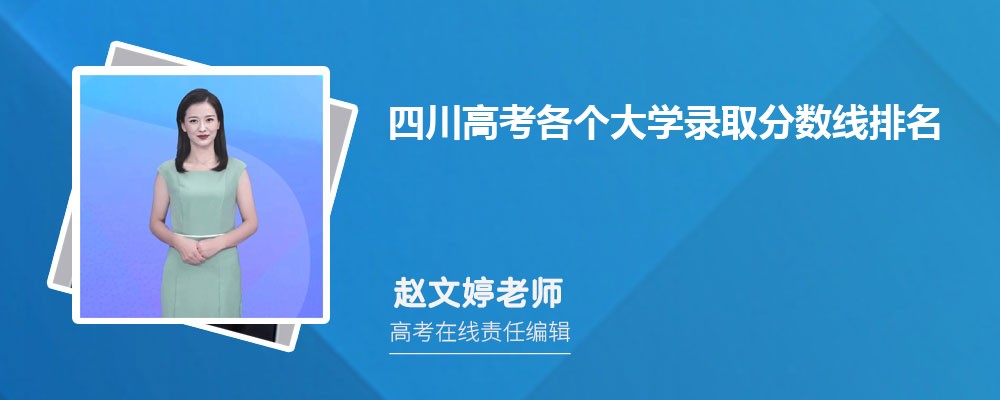篇一:洛阳龙门石窟英文导游词
Good morning ladies and gentlemen, may I have your attention please? From your smiling faces, I know that you may have sweet dreams last night, right? Ok, I have some news even exciting, that is, today we’re going to visit the Longmen Grottoes, which you have been expecting for a long time.
So now let me give you a general introduction first. Around 13 km south of Luoyang, there are two picturesque hills confronting each other with the Yi River flowing northward between them, connected by an arched stone bridge resembling a natural gate tower. This is the right place named Longmen, where the well-known Longmen Grottoes is located.
The grottoes, which earn the fame of one of the Three Treasure Houses of Stone Sculpture in China, were created over 1500 years age. The Longmen Grottoes was first known in the year 493 AD, when Emperor Xiaowen moved his capital to Luoyang from Datong, Shannxi Province, which marked the initiation of development and expanse of Buddhism in Central China. It prolongs for 1000 meters from north to south. According to the statistics conducted in recent years, there are 2300 caves and niches with over 100000 Buddhist figures. In addition, more than 2800 tablet inscriptions and some 40 Buddhist pagodas were preserved in or out of the caves.
Now, we’ve got to the grottoes. Please get off the bus. Here is the Qianxi Temple. It was built in the early Tang Dynasty around 640 AD. It has altogether 7 Buddhist statues inside, of which, Buddha Amitabha is sitting in the central with 2 of his favorite disciples, 2 Bodhisattvas, and 2 Heavenly Kings.
Please come with me. Now we are in front of the Bin yang Caves. The Bin yang Caves consist 3 large caves, the North, the Middle and the South caves. The Mid and the South Bin yang Caves were built under Emperor Xuanwu for practicing the merits and virtues for his diseased parents, late Emperor Xiaowen and late Empress Dowager(遗孀) Wenzhao in 500 AD. While the North Bin yang cave was added for the late Emperor Xuanwu by a eunuch(太监) in the palace named Liu Tang in 508AD.
In the West Hill of Longmen, there are several “the most” caves to feast your eyes. Just now, we visited the Ten-thousand Buddha Cave with 15000 Buddhist images, which has the most Buddha images, and the Lotus Cave with 2cm-high Buddha images, which are the tiniest Buddha images.
And now, we’ve come to another “most”, the Fengxian Temple. So what highlights can we see here? I’ll show you. One day in 655AD, Empress Dowager Wu Zetian cried in the palace. Emperor Gaozong asked her why she was so unhappy. She said: “Do you think I am beautiful?” the Emperor answered: “Of course, you are the most beautiful lady under heaven!” the Empress said: “but sooner of later I would be ugly. Beauty cannot last long.” The Emperor Gaozong at once made the best artist in the palace paint a beautiful portrait of Empress Wu. But she still cried, she said: “the portrait is beautiful, but after hundreds of years, it will rot and disappear.” The Emperor Gaozong suddenly saw the light. He issued an edict(法令) that a stone statue must be carved at once. Hearing this edict, Empress Wu was so pleased that she donated 20000 strings(串) of cash coins for her cosmetics(化妆品) and also attended the consecration(献祭仪式) of the chief Buddha when the construction was thoroughly completed in order to shorten the time of the project. So the main Buddha Losana was carved according to Empress Wu’s appearance.
That is the legend. Now we see, the Buddha Losana is 17.14m high with its head 4m, each ear 1.9m, and flanked by 2 symmetrical disciples, Bodhisattvas, Heavenly Kings, and Great Men of Strength on both sides. The chief Buddha gives you an impression of dignified manner, magnificent looking, wise, farsighted and kind nature. Looking around the overall arrangement, we would rather say that the Fengxian Temple is a scene of a grand imperial court than a spot of Buddhism. Generally speaking, the Fengxian Temple is the most magnificent and artistic among all the shrines of the Tang Dynasty and as well as an example of success in integrating politics with Buddhism in ancient China.
Ok everyone, now you can take photos here. Or you can ask questions that you don’t understand. After 15 minutes we will gather right here. See you then.
篇二:洛阳龙门石窟英文导游词
Welcome to Longmen Grottoes.They are located in the south of Luoyang City.They are between Mount Xiang and Mount Longmen and face Yi River.Longmen Grottoes,Yungang Caves and Mogao Caves are regarded as the three most famous treasure houses of stone inscriptions in China.The grottoes were started around the year 494 when Emperor Xiaowen of the Northern Wei Dynasty (386-534 A.D.) moved the capital to Luoyang.Work on them continued for another 400 years until the Northern Song Dynasty (960-1127 A.D.).The first caves of Longmen were excavated in 494,the 12th year of the Northern Wei Dynasty Xiaowen Emperor's reign.The grottoes extend for some 1,000 meters (about 1,094 yards) from north to south.They contain over 2,300 holes and niches,2,800 steles,40 stupas,1,300 caves and 97,000 sculptured figures that have survived the test of time.Most of these works date from the Northern Wei Dynasty and the flourishing age of the Tang Dynasty (618-907 A.D.).Lots of historical materials concerning art, music, religion, calligraphy, medicine, costume and architecture are stored in the Longmen Grottoes.
Fengxian Temple
Fengxian Temple was built in the Tang Dynasty and it is the largest grotto in Longmen Grottoes with a width of 36 meters (about 118 feet) and a length of 41 meters (about 136 feet).There are nine major figures of various facial appearances and temperaments in the temple that were built in accordance with Buddhist rites by the artists.The most impressive figure is the statue of Vairocana Buddha sitting cross-legged on the eight-square lotus throne.It is 17.14 metres (about 56 feet) high;the head alone is four meters (about 1 3 feet) high,and the ears are nearly 2 meters (about 6 feet) long.Vairocana means illuminating all things in the sutra.The Buddha has a well-filled figure,a sacred and kindly expression and an elegant smile.According to the record on the epigraph,the Empress Wu Zetian together with her subjects took part in the ceremony of Introducing the Light (a Buddhist blessing that the Buddha opens the spiritual light of himself and shares it with others).At the sides of Vairocana there are two statues of Vairocana Buddha’s disciples,Kasyapa and Ananda,wearing prudent and devout expressions. The figures of Bodhisattvas and Devas can also be found in the temple.Some have dignified and genial expressions,while others are majestic and fiery. The various appearances and delicate designs are the representations of the Tang Empire’s powerful material and spiritual strength and the wisdom of its people.
Wanfo cave
The Wanfo Cave which was completed in 680,is a typical cave of the Tang Dynasty of two rooms and square flat roofs.Its name is due to the 15,000 small statues of Buddha chiseled in the southern and northern walls of the cave.The main Buddha Amida sits on the lotus throne,having a composed and solemn face.The wall behind Amida is carved with 54 lotuses,upon which there are 54 Bodhisattvas in different shapes and with various expressions.In addition,very pretty and charming lifelike singers and dancers are also chiseled on the wall.The singers are accompanied by various kinds of instruments and the dancers dance lightly and gracefully to the music,giving the cave a lively and cheerful atmosphere.A 85 centimeter high statue of Kwan-yin holding a pure bottle in his left hand and a deer’s tail—a symbol of brushing off the dust in Spirit—in right hand is on cave’s southern outsider wall.This figure is well designed and is regarded as the Longmen Grottoes’best example of a Tang Dynasty Bodhisattva statue.
Guyang Cave
Guyang Cave is the oldest cave in Longmen Grottoes.There are three tiers of niches on the northern and southern wall of the cave,in which are hundreds of statues,and most of the statues are engraved with the names of the artists,the dates and the reasons for carving them.The sculptures are of diverse shapes and patterns that are representations of the Gandhara Art style after the grotto art transmitted to Luoyang. A stature of Sakyamuni is situated in the middle and is nearly 8 meters (about 26 feet) high. Nineteen of the most famous Twenty Calligraphies are found in Guyang Cave. The Twenty Calligraphies represent the Wei style steles, which are the Longmen Grottoes’ basic stele calligraphies.
Binyang Cave
After constructing the Guyang Cave, the royalty of the Northern Wei Dynasty carved out a series of larger scale caves, which are the northern, southern, and middle Binyang Caves. The middle cave took the longest time to complete (from 500 to 523) and is the only one of the three finished during Northern Wei period. There are 11 big statues in the cave. Sakyamuni is of dignified and serene appearance, while this disciple and Bodhisattva are of slender figure and elegant look, which are the typical style of the late Northern Wei Dynasty. The floor is engraved with lotus patterns and on the rooftop is a flourishing lotus flower relief.
Lotus Cave (Lianhua Cave)
Chiseled grottoes on the base of the natural limestone caves are also seen in Longmen, and the Lotus Cave is one of them. Unlike the sitting statues, Sakyamuni is of standing figure, showing that he has trudged a long distance to develop Buddhism from India to China. A huge relief of a well sculpted lotus flower is engraved on the dome, with a seed bud in the center and petals of honeysuckle patters circling around. Around the lotus are six flying musicians with vivid gestures, as if they are dancing along with the melodies of the music.
Xiangshan Temple
Xiangshan Temple,which is ranked the first among Longmen Grottoes’ten temples,is situated in the middle mountainside of the East Hill.The East Longmen Hill is teeming with spices and is therefore very fragrant smelling.It’s name,Xiangshan, means“Fragrant Hill”in Mandarin.The temple was also named Xiangshan Temple.The present Xianshan Temple was reconstructed during the Qing Dynasty in 1707 and this work was based on the old Temple’ design.In 2002,Xiangshan Temple was expanded on the basis of the Qing Xiangshan Temple by Longmen Grottoes Administration, with a newly constructed Bell and Drum Tower,Wing Room,as well as Halls of Mahavira and Nine Persons. In addition, the belfry, Hall of Arhats, Emperor Qianlong’s stele and palace, Wing-room, Jiang Jieshi and Song Meiling’s Villa, along with the stairs, plank roads and temple walls have all been rebuilt and restored.A new gate was constructed south of the temple.The temple takes on a new look today, and it is really a rare scenic world cultural landmark.
Bai Garden
The Bai Garden is located on Pipa Peak north of East Longmen Hill (Xiangshan Hill) and was
reconstructed by Tang Youzeng of the Qing Dynasty in 1709.The temple is surrounded by green pine trees and cypress, looking solemn and serene. It was designated a key site for protection at the state level by the State Council in 1961. The tomb of Bai Juyi is a round mound of earth, 4 meters high, with a circumference of 52 meters.In front of the tomb stands 2.8-meter-high tombstone,which reads,“The Tomb of Bai Juyi”.Bai Juyi’s family was originally from Taiyuan in Shanxi Province and then moved to neighboring Shaanxi Province.He lived from 772 to 846 A.D.,and his style name was Letian. Bai Juyi was one of the Tang Dynasty’s most outstanding poets and enjoyed great literary fame both in and outside of China.He held a number of high government posts and instructed a prince during his later years. After retiring,he came to Luoyang and made good friends with“Nine Persons of Xiangshan Hill”,who often composed and sang poems at the Longmen Grottoes. Meanwhile,he donated money for the construction of Xiangshan Temple. When Bai Juyi died, he was buried, in accordance to his will, in the present Bai Garden.The important scenic spots in the Bai Garden are the Tingyi, Cuiyue, Bai, and Songfeng Pavilions, Letian Hall, Bird’s Head Gate, Pipa Peak, Bai Juyi’s Tomb, Wogu Tablet, Poem Corridor, and Daoshi Reading Room.As a garden constructed according to style of the Tang Dynasty, it is both a tourist resort and a good place to pay homage to the great poet.
In addition, there is Prescription Cave that has about 140 prescriptions engraved on the walls,showing the achievements of ancient Chinese medicine.Some of the prescriptions are still used today.Other caves and temples like Xiangshan Temple, Huangfu Cave, and Qianxi Temple can also be found at the Longmen Grottoes.
Well, my friends,Longmen Grottoes’s visit nearly come to an end,and I have to say goodbye to you a11.Anyway I am very glad to have spent such a happy and unforgettable day with you. Welcome you to come here again for sightseeing.Thank you all! Have a happy journey! Goodbye!
篇三:洛阳龙门石窟英文导游词
Ladies and gentlemen,
Hello, Confucius said, has the friend to come from the distantplace, delight. Today, I am precisely have this kind of feelings toreceive fellow friends the arrival.
Luoyang, is the historical famous city which the Chinese and foreignis well-known. She has glorious historical, bright cultural and themultitudinous cultural relic historical site. In order to cause fellowguests at Luoyang period can has the further understanding to thisancient city historical culture and the historical site, is riding ina carriage the scenic spot visit on the way, I Luoyang's history andthe Longmen Grottoes approximate situation, will make the si-mp-leintroduction to everybody. Luoyang is located west Henan Province, theYellow River middle reaches Nanan. Because of is situated at northshore the Luohe river to acquire fame, Italy is positive for the Luoriver water.
Luoyang in the history once was the city which the multitudinousdynasty founds a capital, is known to be "nine faces the ancientcapital". In this more than 1,000 years historical perpetual flow,Luoyang once the long time took Chinese the politics, cultural, theeconomical center. Today, we visit the world famous Longmen Grottoesthen are one of multitudinous cultural relic historical sites.
The Longmen Grottoes, in the Luoyang Nanjiao's Dragon Gate mountainpaplace, are apart from the urban district 12.5 kilometers, too and19 years opens cutting from Northern Wei Dynasty, up to now some morethan 1,500 years history, it with the Dunhuang Mogao Caves, the Datongcloud hillock rock cave, together has composed our country famousthree big rock caves art treasure house.
Dragon Gate, in the Spring and Autumn Period Warring States timecalled "Iraq Xiangshan (Dongshan) (Xishan) the thing confrontswith Longmen Mountain, the Iraqi water from the average, has formed agrand gate Latter because is in the Sui and Tang dynasties empiresouth, also calls Dragon Gate.
So-called "rock cave", is the hole which opens cutting on the cliffcliff is straight, perhaps natural forms the pit hole, with hides orstores food and the thing. As early as in primitive society, thepeople have used the natural pit hole description zoomorphism and thelife scene, however by the phenomenon appears and the placewhich as the buddhist, the clergy worships buddha and leads a piouslife, actually is starts Buddhism after ancient India to appear.
As a result of wooded mountain lonesome and quiet, mystical, rock cavewarm in winter and cool in summer, the rock cave uses the templeconvenience according to Shan Diaozao which the bricks and stonesbuilds to be more durable than, therefore appeared the collectionbuilding, the drawing, the vulture in ancient India has chiselled artto accomplish This kind of art, does missionarywork the activity along with the clergy to spread to our country theborder area and the inland, with our country national characteristicsand the traditional each kind of artistic technique style fusionconnection, becomes our country one kind of unique carving, thecolored drawing on pottery craft. We must look today the LongmenGrottoes are one of in our country multitudinous temple grouptreasures.
相关文章
西藏高考各个大学录取分数线排名表和最低位次2024-06-13 17:51:39
内蒙古高考各个大学录取分数线排名表和最低位次2024-06-13 17:50:37
青海高考各个大学录取分数线排名表和最低位次2024-06-13 17:49:36
新疆高考各个大学录取分数线排名表和最低位次2024-06-13 17:48:39
云南高考各个大学录取分数线排名表和最低位次2024-06-13 17:47:34
山西高考各个大学录取分数线排名表和最低位次2024-06-13 17:46:23
宁夏高考各个大学录取分数线排名表和最低位次2024-06-13 17:45:24
陕西高考各个大学录取分数线排名表和最低位次2024-06-13 17:44:26
中学生英语学习计划2023-08-17 16:16:40
关于爱情的个性励志签名2023-08-16 23:01:55
中考生十大高效复习法2023-08-10 01:10:58
烟台的海导游词例文2023-08-09 05:49:17
华山导游词精选范文2023-08-08 11:27:41
海神庙导游词2023-08-15 04:41:32
景点导游词(十五篇)2023-08-10 21:17:06
四川九寨沟导游词(精选十五篇)2023-08-02 12:51:18
湖北省有名景点导游词2023-08-17 15:31:35









